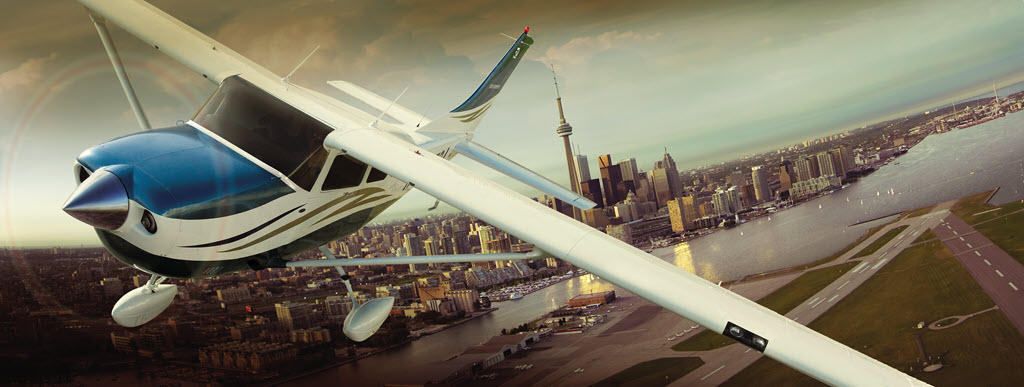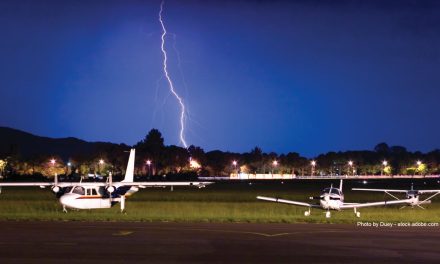What to Know BEFORE You Go
Sponsored by AirMart, Inc. – www.AirMart.com
We’ve all had it happen. We’re ready to fly, but find that silly little red beacon light is inoperative. Now what? Is it really possible that a plane worth tens of thousands of dollars and in otherwise perfect working order is not airworthy because of a single light bulb?
To find an answer to this quandary, I looked to the Internet. Since I know that everything on the Internet is checked out and guaranteed to be true, I delved into my search with confidence. Alas, it didn’t take long before I found myself disappointed and disillusioned. Many peopled were asking the same question, but the answers were very different: “NO”, “YES”, “Only if its day time”, “Yes, if you have wing tip strobes on”, and my favorite, “Go ahead and fly and just say it must’ve burned out during the flight.”
Well, since the Internet let me down, I decided to take a look at the FARs to see what they have to say. Here’s what I found:
FAR 91.205 (b)(11) Instrument and equipment requirements, Day
For small civil airplanes certificated after March 11, 1996, in accordance with part 23 of this chapter, an approved aviation red or aviation white anti-collision light system. In the event of failure of any light of the anti-collision light system, operation of the aircraft may continue to a location where repairs or replacement can be made.
FAR 91.205 (c)(3) Instrument and equipment requirements, Night
An approved aviation red or aviation white anti-collision light system on all U.S.-registered civil aircraft. Anti-collision light systems initially installed after August 11, 1971, on aircraft for which a type certificate was issued or applied for before August 11, 1971, must at least meet the anti-collision light standards of part 23, 25, 27, or 29 of this chapter, as applicable, that were in effect on August 10, 1971, except that the color may be either aviation red or aviation white. In the event of failure of any light of the anti-collision light system, operations with the aircraft may be continued to a stop where repairs or replacement can be made.
FAR 91.209(b) Aircraft Lights
No person may operate an aircraft that is equipped with an anti-collision light system, unless it has lighted anti-collision lights. However, the anti-collision lights need not be lighted when the pilot-in-command determines that, because of operating conditions, it would be in the interest of safety to turn the lights off.
So if you have an aircraft certified after 3/11/96, it must have a red or white anti-collision light system. This can be a beacon on the tail or the white flashing strobes on the wing tips. Per this regulation, only one or the other is required. If you’re flying at night, ALL aircraft are required to have one of the systems (or one that meets the early certification requirements).
Notice both paragraphs in 91.205 allow the plane to continue to be flown as long as you’re taking it to a location where it can be repaired. I’m pretty sure this doesn’t include a sightseeing trip around the country side or 10 touch-and-gos in the pattern. Also notice that 91.209 requires the lights to be turned on—both day and night, unless you feel it’s in the interest of safety to turn them off. Of course, you better have a sound reason to give the FAA as to why you felt it was safer to have them off.
However, here’s the BIG question that has generated much debate on the aviation forums: If you have both a red tail beacon and the white wing tip strobes, can one of them be inoperative? To many people it seems obvious. Since there are many aircraft models that only have a red beacon, and there are many models that only have strobes, and the regulations only require one or the other be installed, it’s reasonable to assume only one system needs to work. The problem with this answer is that it’s too rational. It’s the answer that seems most reasonable and sensible. However, reasonable, rational, and sensible are words that too often don’t describe the FAA’s answers.
I searched the FAA’s “Regulations Division, Legal Interpretations & Chief Counsel’s Opinions” website and found an interpretation that answered this exact question. It’s dated Jan 11, 2011 and was written by Rebecca B. MacPherson, Assistant Chief Counsel for Regulations, AGC-200.
In her letter, she states:
“As an initial matter, it appears that the strobe light and the rotating beacon are part of the same anti-collision system. The airworthiness standard that governs the need for an airplane to be equipped with an anti-collision light system, 14 C.F.R.23.1401(a)(1), states that ‘the airplane must have an anti-collision system that … consists of one or more approved anti-collision lights…’ Because the strobe light and the rotating beacon are both approved anti-collision lights, under 23.1401(a)(1), they are part of the same anti-collision system.”
“Moreover, because section 91.209(b) does not contain an exception for alternative sources of anti-collision lighting, turning on the anti-collision beacon would not relieve a pilot from the requirement to turn on the anti-collision strobe lights… However, 91.209(b) does give the PIC the discretion to turn off the anti-collision beacon and/or the anti-collision strobe light system if the PIC determines that it is in the interests of safety to turn off either one or both of these components of the same light system.”
It seems clear that the FAA calls the beacon and strobes part of the same system—and a system that is required to be fully operational. This of course means that both beacon and strobe must be turned on by the pilot (unless he deems it unsafe for a particular situation). Based on this FAA interpretation, you may want to invest in a spare bulb for both your beacon and strobe lights. It’s an investment that may someday keep you from being grounded because of one simple light bulb.
Note: If you have an aircraft certified after 3/11/96, it must have a red or white anti-collision light system. This can be a beacon on the tail or the white flashing strobes on the wing tips.





